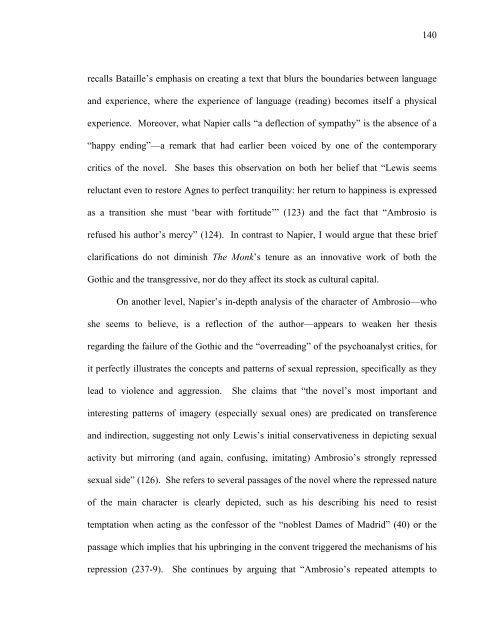Untitled - Sexey's School Moodle
Untitled - Sexey's School Moodle
Untitled - Sexey's School Moodle
You also want an ePaper? Increase the reach of your titles
YUMPU automatically turns print PDFs into web optimized ePapers that Google loves.
ecalls Bataille’s emphasis on creating a text that blurs the boundaries between language<br />
and experience, where the experience of language (reading) becomes itself a physical<br />
experience. Moreover, what Napier calls “a deflection of sympathy” is the absence of a<br />
“happy ending”—a remark that had earlier been voiced by one of the contemporary<br />
critics of the novel. She bases this observation on both her belief that “Lewis seems<br />
reluctant even to restore Agnes to perfect tranquility: her return to happiness is expressed<br />
as a transition she must ‘bear with fortitude’” (123) and the fact that “Ambrosio is<br />
refused his author’s mercy” (124). In contrast to Napier, I would argue that these brief<br />
clarifications do not diminish The Monk’s tenure as an innovative work of both the<br />
Gothic and the transgressive, nor do they affect its stock as cultural capital.<br />
140<br />
On another level, Napier’s in-depth analysis of the character of Ambrosio—who<br />
she seems to believe, is a reflection of the author—appears to weaken her thesis<br />
regarding the failure of the Gothic and the “overreading” of the psychoanalyst critics, for<br />
it perfectly illustrates the concepts and patterns of sexual repression, specifically as they<br />
lead to violence and aggression. She claims that “the novel’s most important and<br />
interesting patterns of imagery (especially sexual ones) are predicated on transference<br />
and indirection, suggesting not only Lewis’s initial conservativeness in depicting sexual<br />
activity but mirroring (and again, confusing, imitating) Ambrosio’s strongly repressed<br />
sexual side” (126). She refers to several passages of the novel where the repressed nature<br />
of the main character is clearly depicted, such as his describing his need to resist<br />
temptation when acting as the confessor of the “noblest Dames of Madrid” (40) or the<br />
passage which implies that his upbringing in the convent triggered the mechanisms of his<br />
repression (237-9). She continues by arguing that “Ambrosio’s repeated attempts to



